Kuhn Rikon Easy Pro non-stick frying pan review: Easy like Sunday morning
Kuhn Rikon’s Easy Pro is, as the name suggests, a very solid performer that will suit most people
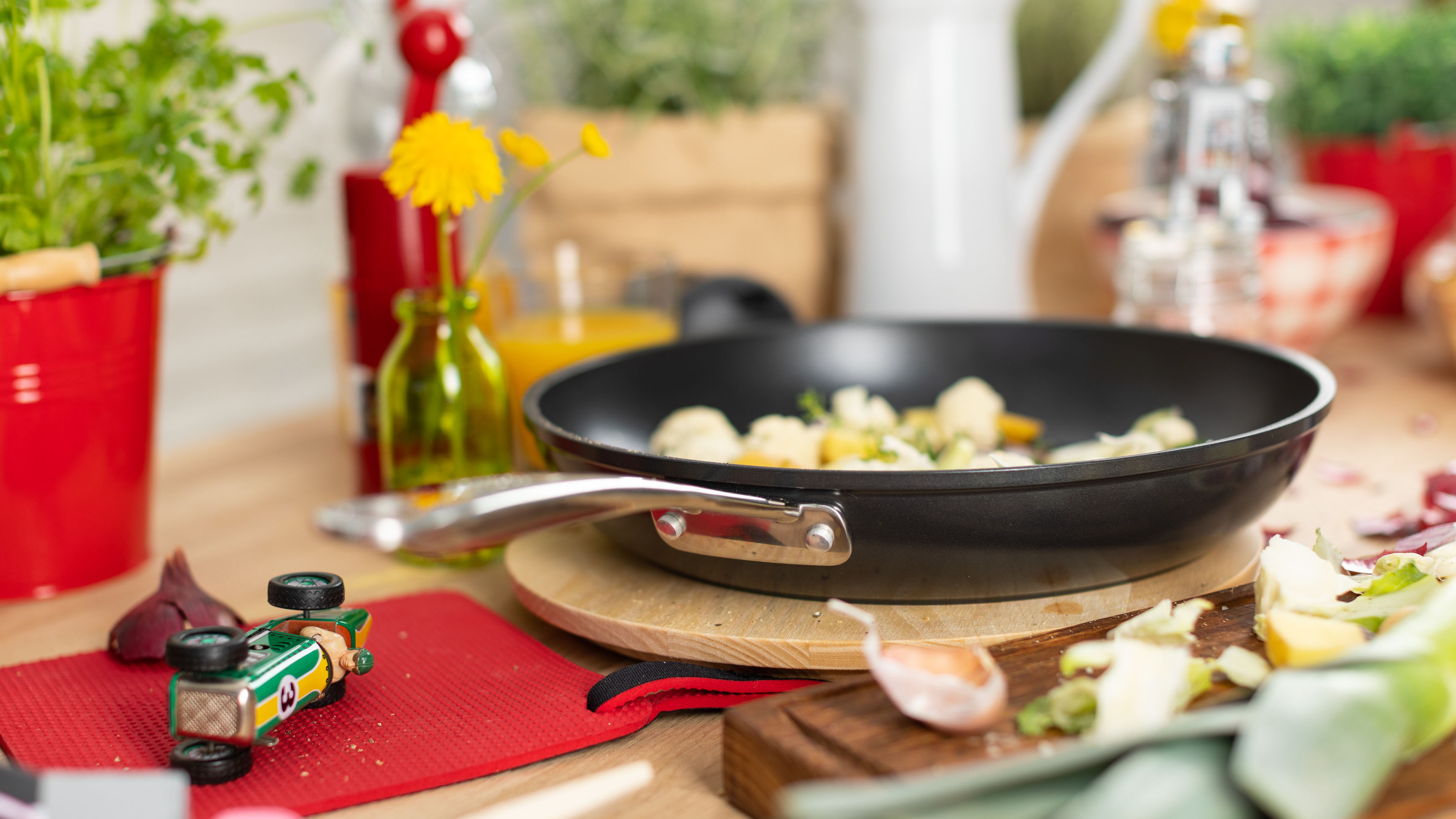
A real bargain, the Kuhn Rikon Easy Pro is well up to the standard you'd expect from one of Nigella's favourite brands
-
+
Good build quality
-
+
No-nonsense design
-
+
Solid non-stick surface performance
-
+
Low price
-
-
Not so good on induction
Why you can trust T3
Swiss cookware crafter Kuhn Rikon has been in the saucepan business for nearly 100 years now. Mr Kuhn bought his first pan factory way back in 1926 would you believe, and in the century since the company has built a reputation for well-priced, workmanlike pots and pans.
So, who better to turn to if you’re looking for a non-stick pan to see you through the next 5-10 years? Kuhn Rikon’s Easy Pro is slightly more expensive than some of the other non-stick pans we’ve looked at – the Tefal Ultimate ON and the GreenPan Venice Pro for example – but it can still be had for an eminently reasonable price.
You might imagine that Nigella Lawson would use only the very best non-stick frying pan, and probably the most expensive at that, but she is also known to be a fan of Kuhn Rikon. Little wonder; this is a very good quality pan, with a non-stick surface that should hold up to a good amount of wear and tear.
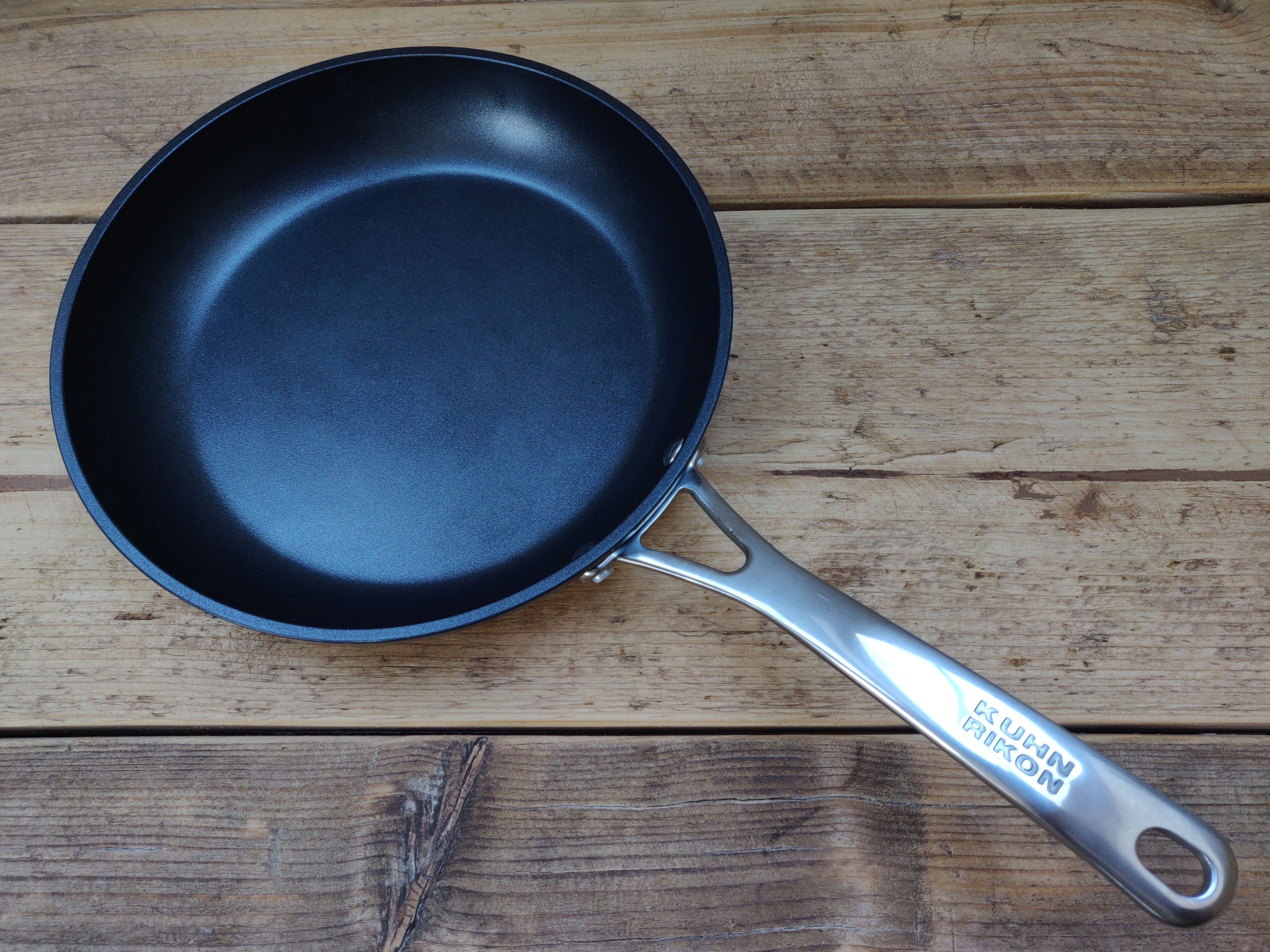
Kuhn Rikon Easy Pro non-stick frying pan: Build
Like Tefal and GreenPan, Kuhn Rikon uses aluminium as the base metal for its Easy Pro range. Pans can be made from a range of metals, often in different configurations; copper, stainless steel, cast iron and aluminium are all commonly used, and each has a different set of pros and cons. Aluminium is a fantastic heat conductor – second only to copper in that list – but it’s also lighter, cheaper and requires a lot less maintenance than copper.
All that makes aluminium excellent for cooking with, but there are a few caveats. Firstly, aluminium isn’t magnetic, so if you’re cooking on induction, aluminium pans won’t work unless they’ve been augmented with a magnetic baseplate (usually stainless steel). Secondly, raw aluminium is very reactive, so it can leach into acidic foods if it comes into contact with them. Opinion remains divided on whether this is necessarily a health issue, but some people claim that aluminium can affect the taste of food, particularly acidic foods, if the two come into contact.
Normally aluminium pans will have been coated with a non-stick surface, or anodised (a chemical process where the aluminium develops an extremely tough aluminium oxide exterior). I generally prefer anodised aluminium pans, partly because it’s much stronger than cast or forged aluminium, but also because non-stick surfaces bond much better to aluminium oxide. The Easy Pro is made from forged aluminium – as a result it’s much stronger than your average cast aluminium pan, but I would have preferred it to be anodised.
Still, the build quality is extremely solid. The pan has a good weight to it and a thick, heavy bottom, but like the GreenPan Venice Pro it’s still light enough to feel nifty in the hand. The Easy Pro is induction compatible thanks to a magnetic layer that goes from the base all the way around the sides of the pan. I suspect this is stainless steel but the Kuhn Rikon website doesn’t make that clear. Using a stainless steel base plate to make aluminium pans induction-compatible is a pretty common workaround. Generally these solutions are workable if you’re using induction but they might not be quite as effective as a good stainless steel pan.
The handle is riveted rather than being welded or screwed, which is a good thing in my book. I don’t know that riveted handles are necessarily stronger, but they’re easier to get repaired and they tend to loosen gradually, whereas welds can fail quickly and suddenly. The hanging loop on the handle is a nice touch too.
All Kuhn Rikon’s Easy Pro range are covered by a 3 year warranty. That covers manufacturing defects and the like but not standard wear and tear, so as always, beware if you’re trying to get your pan replaced after a couple of years – the lines between damage, defect and wear and tear are very blurry.
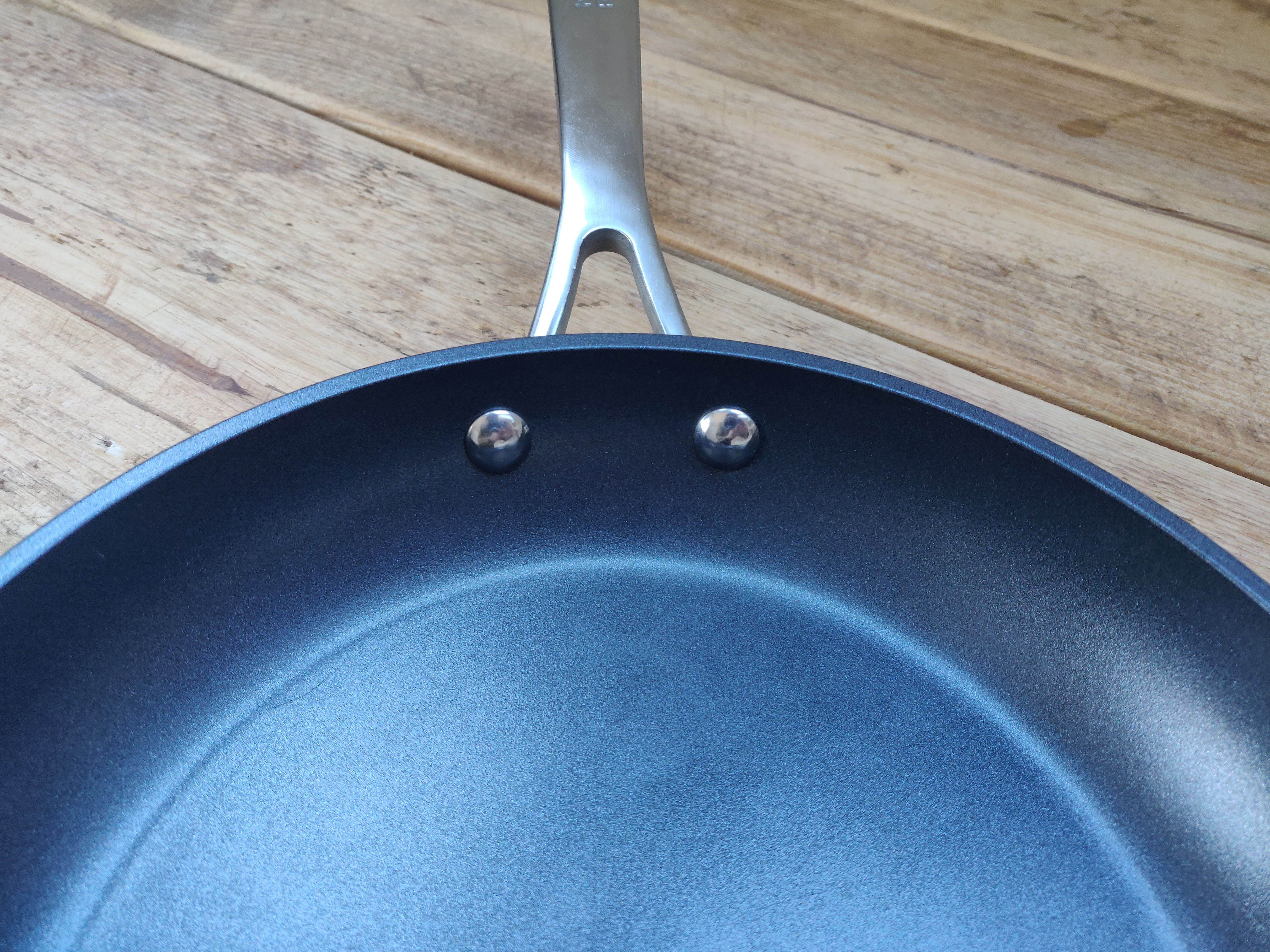
Kuhn Rikon Easy Pro non-stick frying pan: Non-stick
Generally speaking there are two different types of non-stick: ceramic non-stick, which is made from sand and used by brands like GreenPan; and PTFE non-stick – a frictionless polymer that is applied to pans. Teflon, for example is a PTFE.
The PTFE coating used by Kuhn Rikon is called QuanTanium – another brand similar to Teflon but produced by a company called Whitford. Whitford’s documentation rates QuanTanium as a 4 out of 5 for both price and performance, but it does appear to be a more cost-effective solution than something out-and-out performance driven.
A simple scratch test with a cutlery knife did start to remove the top surface of the non-stick, but it didn’t obviously affect the performance of the pan. Kuhn Rikon suggests that you shouldn’t use metal implements with this pan anyway, but it still gives a general indication of how robust the non-stick is. Interestingly, Whitford claims that it is safe to use metal utensils with QuanTanium – a claim I wouldn’t support.
Compared to the non-stick coating on the Robert Welch Campden and the Tefal Unlimited ON, the Easy Pro will definitely need a little more looking after. There’s no reason why the Kuhn Rikon couldn’t last you at least 5 years, but if you’re the sort of cook who rattles pans around in cupboards and bungs them in the dishwasher regularly, don’t be surprised if the non-stick gives out on you before that.
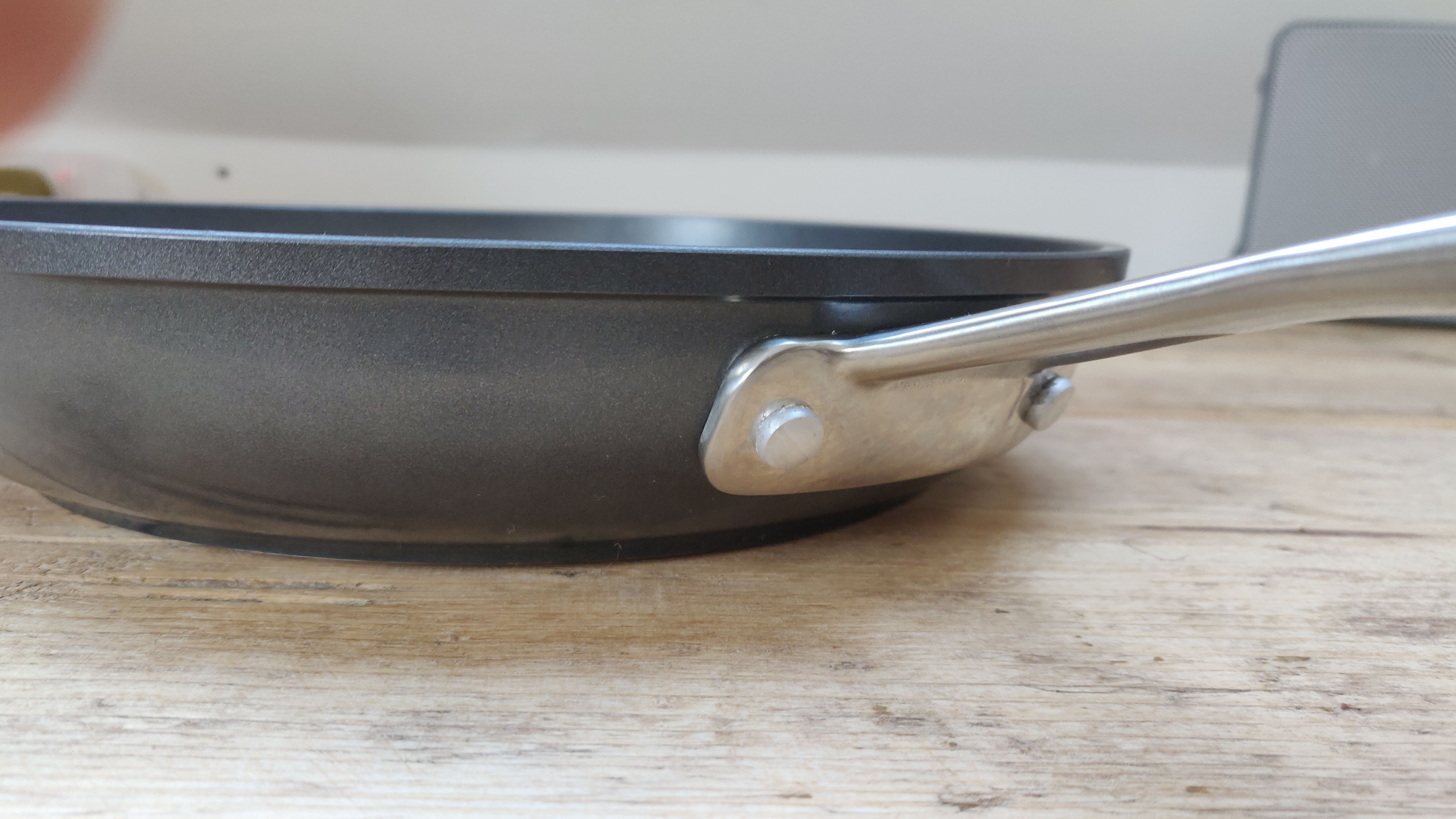
Kuhn Rikon Easy Pro non-stick frying pan: Performance
Overall I think the Easy Pro is a great pan. As previously mentioned it feels very sturdy – it doesn’t have the same heft as the Robert Welch Campden or the ProWare copper tri-ply, but it isn’t as big as those pans and much of the weight is concentrated in the thick base. Ultimately, that pays dividends when it comes to cooking – the Easy Pro only needed a couple of minutes to come up to temperature over a medium flame, which puts it right up there with the GreenPan Venice Pro as the two fastest-heating pans I’ve tested. The base of the Venice Pro is slightly thinner, so overall, I’d give the Kuhn Rikon an edge here. Once it was up to temperature it held the heat really well, even around the sides of the pan; the sides can sometimes be made too thin to cut down on weight and costs, but that isn’t the case with the Easy Pro.
I was pleasantly surprised by how the pan performed on induction as well. There is a bit of a drop off in how quickly the pan heats up – induction base plates never seem to be quite as effective as clad stainless steel pans in this regard – but the Easy Pro retained heat well once it got up to temperature. This may be in part because the Easy Pro’s magnetic layer wraps around the whole pan, rather than simply heating the base. As a result, the pan seems to perform better than counterparts, but on the whole I still think a good stainless steel pan with an aluminium or copper core is best if you are cooking on induction.
I had no issues with the non-stick – it works perfectly straight out of the box with no preparation necessary. You would expect no less from any decent PTFE coating, the question really is one of longevity, and how long this QuanTanium non-stick will last.
One last thing to note – QuanTanium non-stick is safe up to a temperature of 260ºC. Not all PTFE coatings are this heat-resistant and as a result, many of them aren’t suitable for oven use, or for cooking at higher temperatures on the hob. You still have to be careful with any non-stick as overheating will ruin their frictionless properties, but at least thanks to QuanTanium and the stainless steel handle, you can use the Easy Pro in the oven at sensible temperatures.

Kuhn Rikon Easy Pro non-stick frying pan: Verdict
I think the Kuhn Rikon Easy Pro is a fantastic non-stick saucepan. It has a lot going for it – great build quality, fantastic performance, and some neat little touches like the handle loop and riveted handle.
The question with non-stick pans is always one of price versus longevity. It doesn’t matter how well built the pan is if the non-stick only lasts a few years. The QuanTanium non-stick surface on the Easy Pro seems decent, but it’s not nearly as rugged as the ILAG surface used on the Robert Welch Campden, or the Tefal Unlimited ON. And though it does a decent enough job on induction, I still feel that I’d rather have a stainless steel pan with an aluminium core if that was my main cooking medium.
That said, if you’re someone who looks after your pans and you’re not cooking on induction, you’ll struggle to find a better pan for the price.
Sign up to the T3 newsletter for smarter living straight to your inbox
Get all the latest news, reviews, deals and buying guides on gorgeous tech, home and active products from the T3 experts
-
 Polar’s new subscription feature lands in the shadow of Garmin’s Connect+ rollout
Polar’s new subscription feature lands in the shadow of Garmin’s Connect+ rolloutPR genius or timing disaster? Polar’s new Fitness Programme adds adaptive training to its ecosystem
By Matt Kollat Published
-
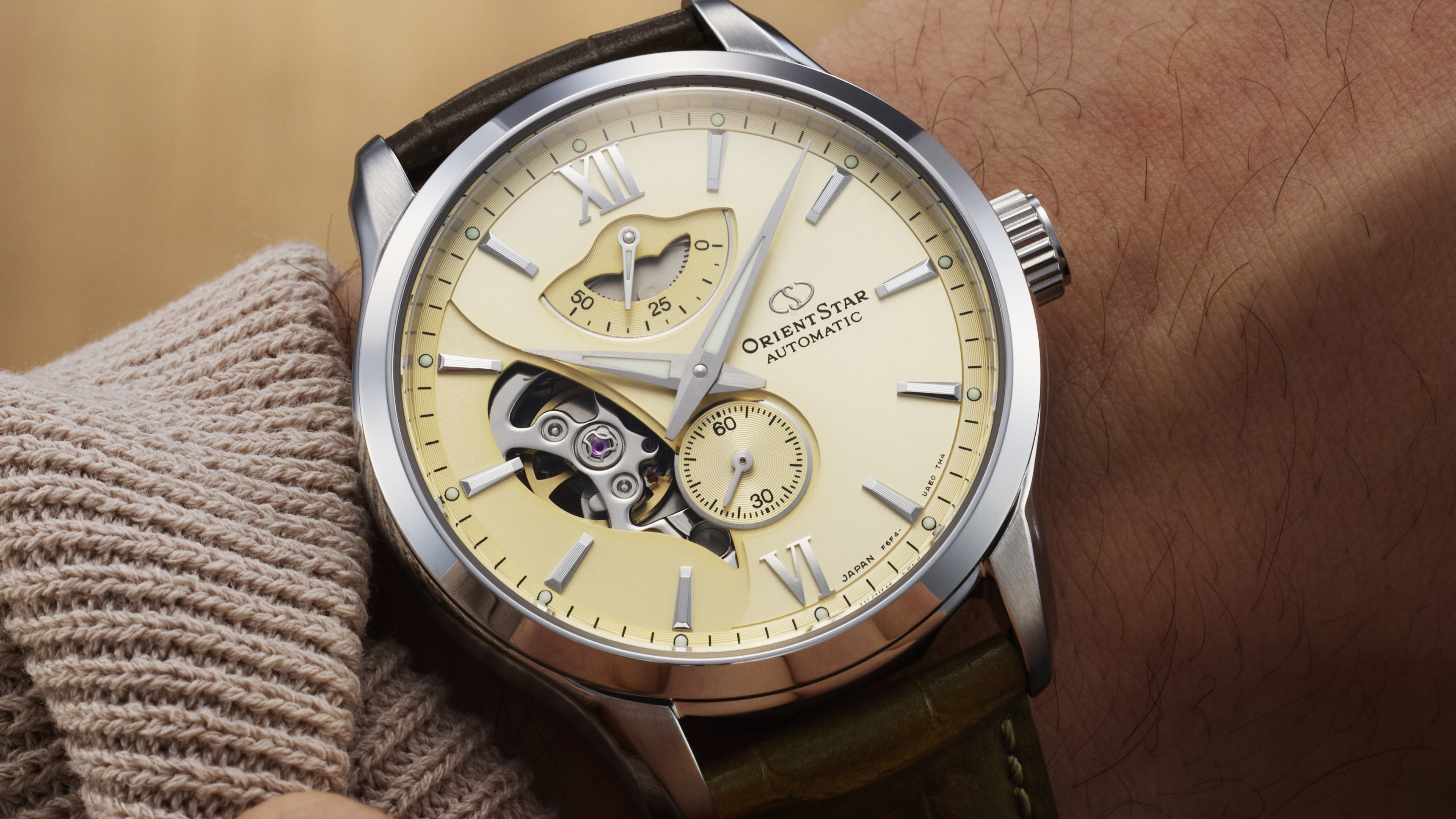 New Orient Star watches offer a glimpse of the magic within
New Orient Star watches offer a glimpse of the magic withinThere are two new skeleton pieces
By Sam Cross Published
-
 Netflix's most surprising 100%-rated sci-fi series returns with gorgeous trailer
Netflix's most surprising 100%-rated sci-fi series returns with gorgeous trailerLove Death + Robots is back for more
By Max Freeman-Mills Published